Text
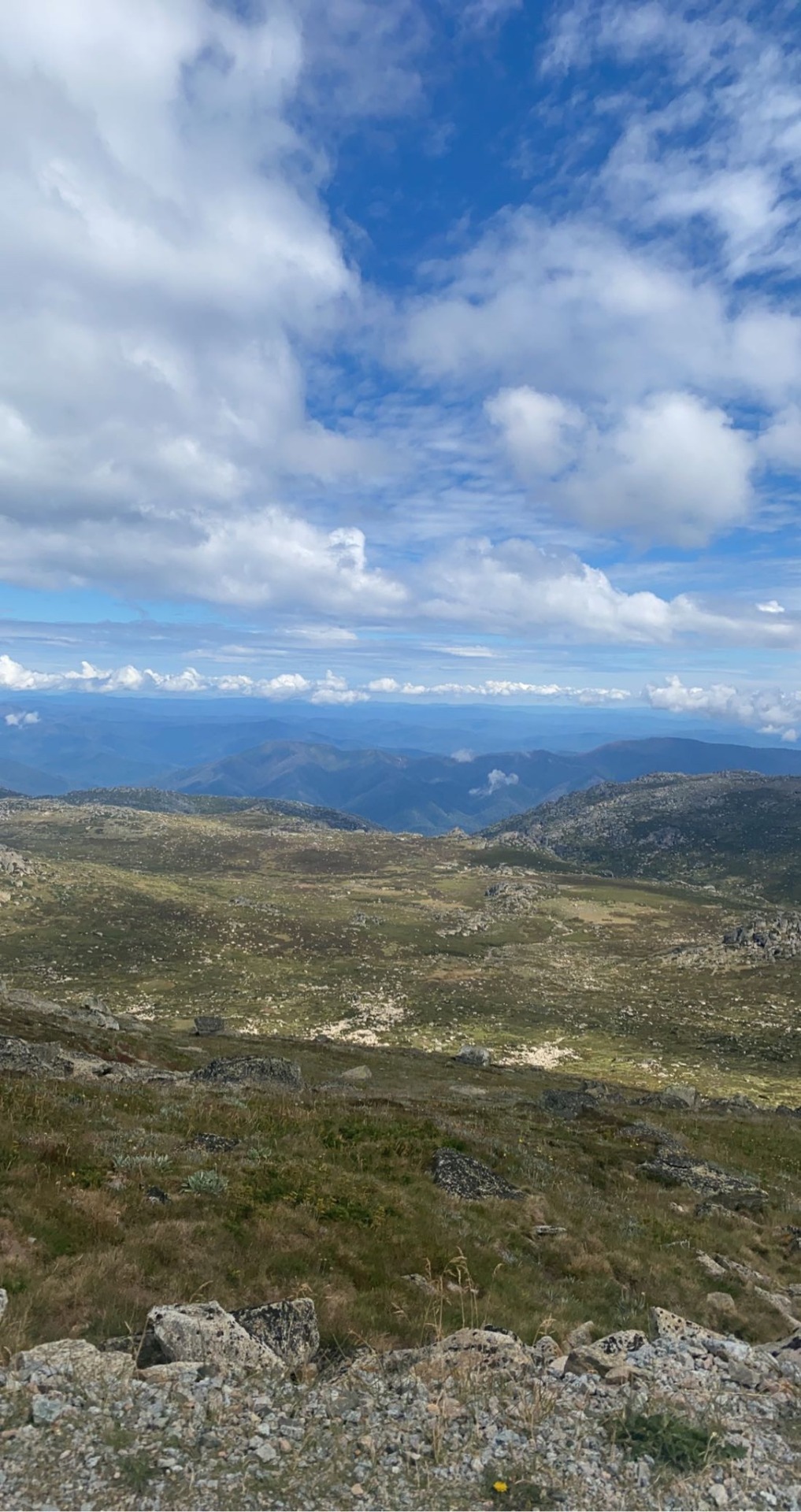

Mt. Kosciuszko 🏔️☀️🌏
@whoiscorza
#australia#thredbo#mount kosciuszko#the highest point in Australia#tallest mountain in australia#was a 12 km walk
3 notes
·
View notes
Text
Everyone is all like 'oh the Appalachian mountains are so old, they're older than all this really old stuff, they're sooooo old' Yeah they are and that's cool but you know what mountains are older? The Hamersley Range in Western Australia. By almost 3 times.
The Appalachians are 1.2 Billion Years Old. That's really old! The Hamersley Range is 3.4 Billion Years Old. That's before there was oxygen accumulating in Earth's atmosphere. They are older than AIR.

Due to nearly three an a half billion years of erosion, the tallest peak in the range is only 1,249 meters tall - that's 4,098 feet.

Australia is an extremely ancient continent, geologically. The mountains are in the Karijini National Park, which is 6,274.22 km2 (2,422.5 sq mi). They also contain Juukan gorge, which was the site of an incredible sacred cave that contained evidence of human occupation dating abck at least 32,000 years. The archeological significance (and cultural significance to the local Aboriginal people) of this site cannot be overstated. This cave was destroyed by mining company Rio Tinto in 2020. Look I just want some respect for how cool and ancient geology can really get ok. (Photos from wikimedia commons)
7 notes
·
View notes
Note
you inspired me to take the flag up the tallest mountain in my state of Victoria, australia!
1,986 metres (6,516 ft). australia isn't the tallest country but it was worth it anyway.
That's fantastic!!! I love hearing stories like this :)
And that's around the highest elevations of peaks I've been doing so far with the Southern Sixers and whatnot - eastern North America is rugged but not especially high in elevation. So we're in the same boat until I head out west :)
4 notes
·
View notes
Text
20-08-2023 (2/2)
----- Continuation of part 1 -----
The sunrise the next morning was a beautiful sight, but Elrond had never been as frozen as he was that night! I was glad the doors weren't frozen shut and I could still get out to take some nice pictures:
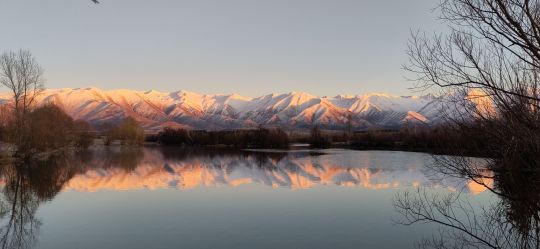


I'd been keeping a close eye on the status of the roads around these parts, and was overjoyed that the road to Aoraki, which had previously been closed due to heavy snow, had been reopened. At 3724 meters, Aoraki is the tallest mountain in Aotearoa, and a wildly impressive sight to see:
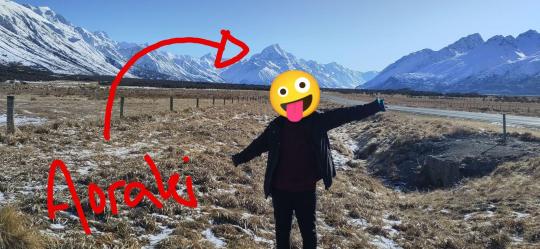
We drove up as close as we could get along the Hooker Valley Road, and then geared up for a hike up to Hooker Lake. Sunscreen and sunglasses were essentials, for the entire trail was covered in a thick layer of snow. The bushes all around the track looked like soft little snowy hills, and I'm proud to announce I only slipped and fell down a set of steps once. My travel buddy joked that she wished she had recorded all the noises I made every time my feet slipped and I almost fell, which happened countless times during the ~4 hours it took us to get there and back. Especially the three ice-covered swing bridges across the Hooker river were dizzyingly treacherous terrain. Though we both felt sore from walking in the snow, the end goal was 1000% worth it! I bet this track is a lot of fun during summer as well, but this felt like the epitome of "walking in a winter wonderland" ❄️🎶
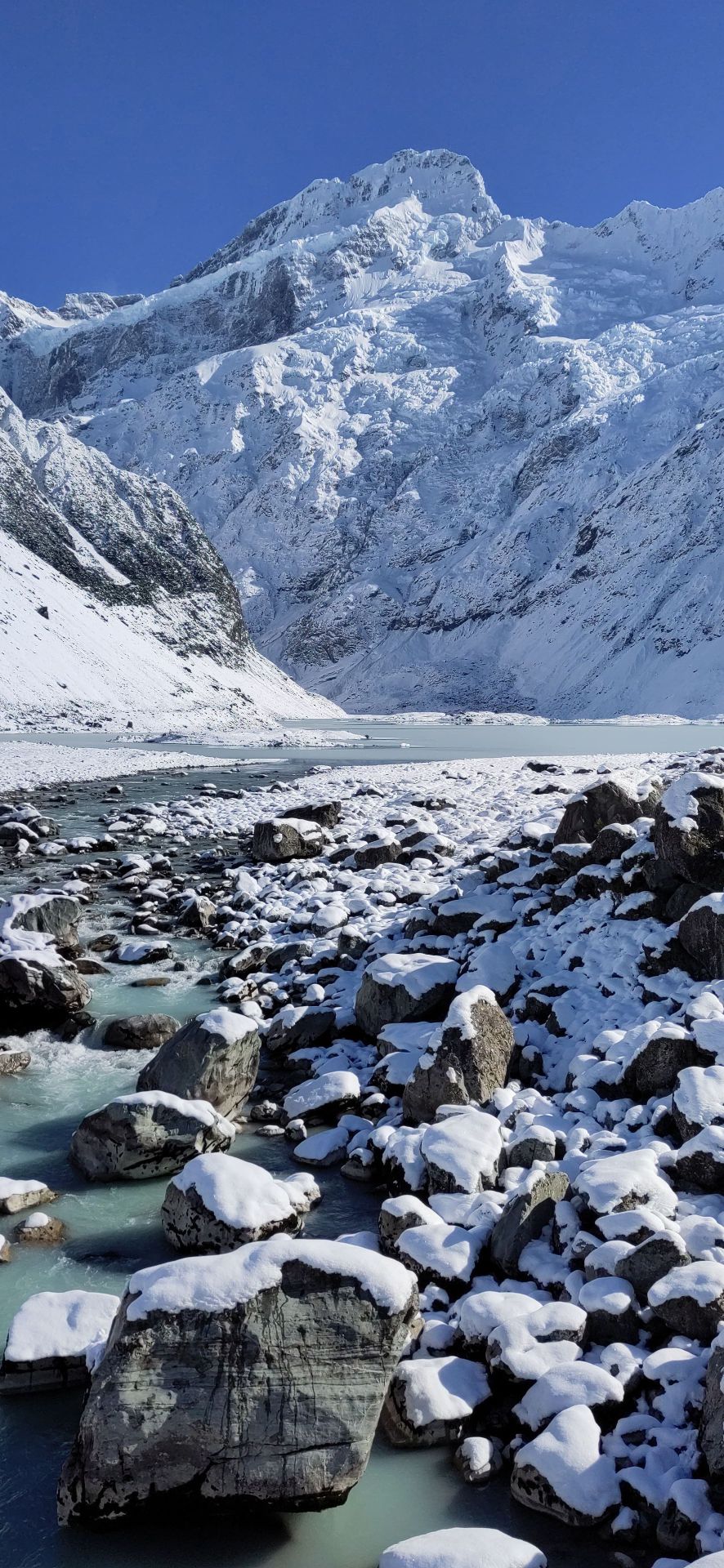
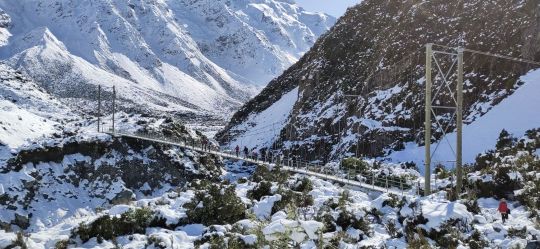
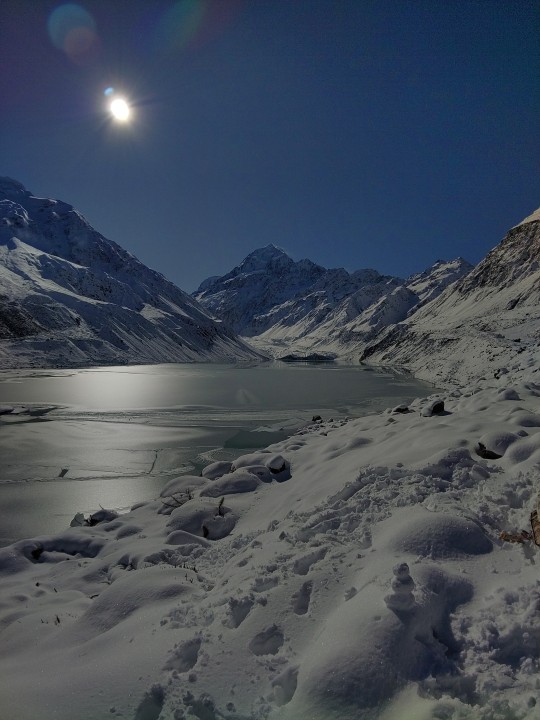
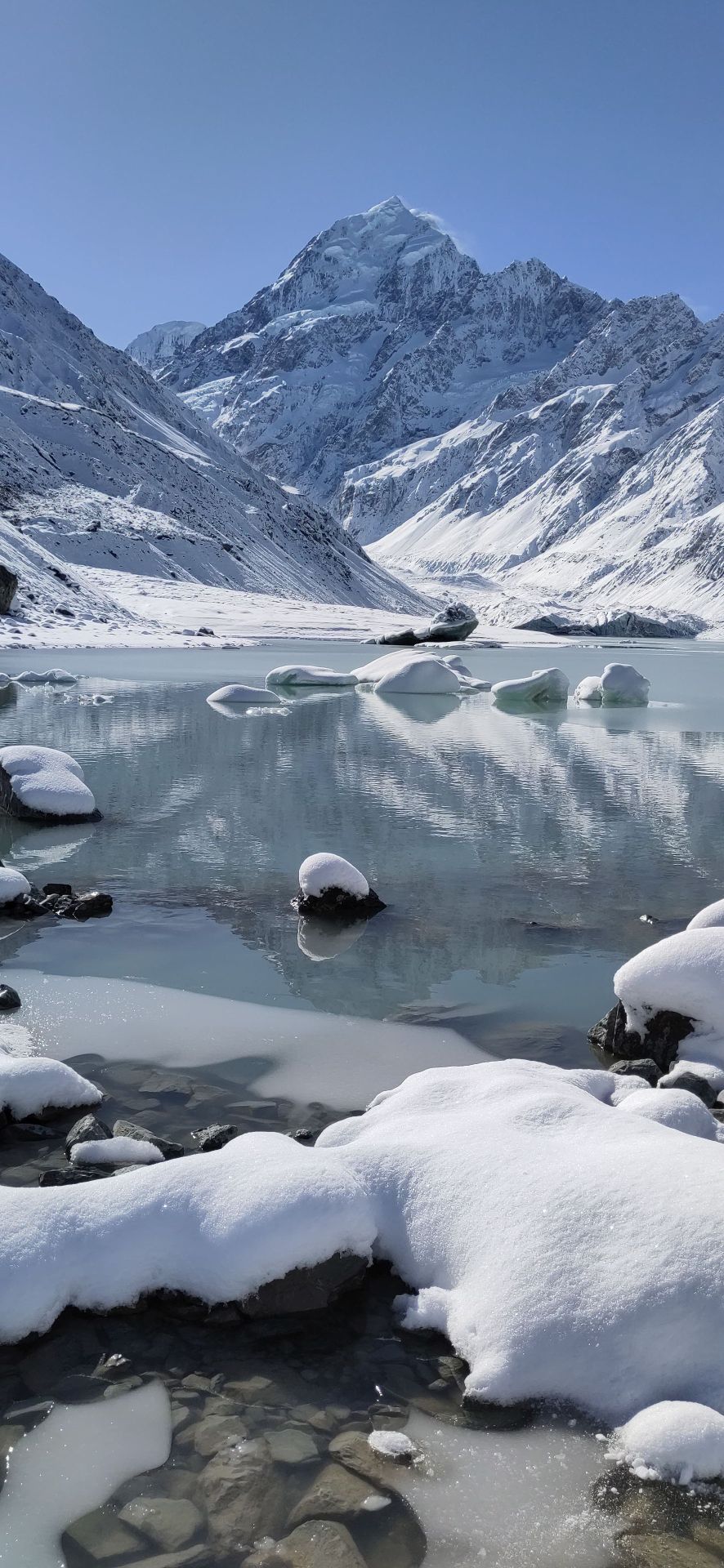
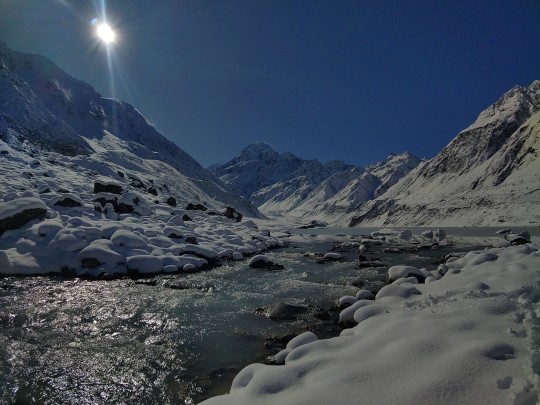
We had a lot of fun throwing snow balls and pushing our faces into the soft snow when we needed to cool down from the walking. By the time we got back to the parking lot we were both exhausted, but very pleased with the day we'd had ❤️
During the drive back we called ahead to a holiday park in Twizel to make sure they'd have space for two cars, because we were both craving a hot shower and a proper meal. The camp kitchen wasn't worth much, but we managed to cook up a feast for ourselves and cozied up to the fireplace with a movie for what would be our last night together, at least for now. In the morning we both went our separate ways, because our plans and wishes had started to diverge. I really enjoyed caravan-ing up with somebody else, it's nice to know you have somebody to talk to before you go to bed, somebody to have a cup of tea with in the morning, and somebody to share the beautiful sights with. Who knows, we might catch up again at a later date! We did briefly run into each other shortly after parting ways at the Omarama clay cliffs, which are a really cool sight (again, a short drive brings you to a dramatically different landscape):
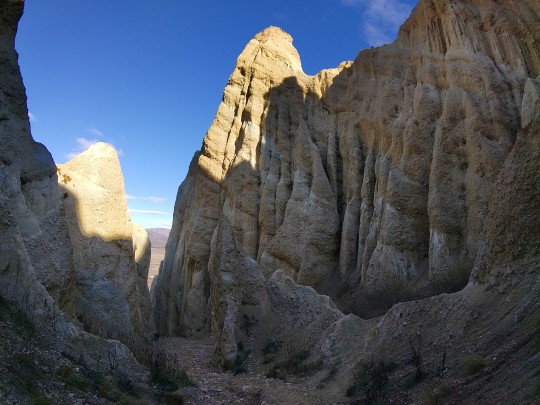
For now I'm back on my own, and while I was planning to head to Oamaru and view the blue penguins, that's going to have to wait for a bit. I decided to take a leap and try my luck at finding a temporary job in the Tāhuna area. It's a bustling region right now due to the ski season, there are loads of tourists here (who drive so slowly omg who have I become that this bothers me) so I'm hopeful I might find a place to work. I'd like to earn back some of the money I've been spending on fuel, and the thought of being in a more populated area for a while, having fun with colleagues, playing music... sounds quite nice to me right now. Who knows though, I might not find anything and decide to just move on after a couple of days after all. Time will tell. In the meantime I'm trying to get some rest, it's been a rather intense week with a lot of driving and I'm content to just sit still for a moment and collect my thoughts. I've been feeling a bit better, getting my sense of adventure back, but I'm not quite as chipper as I'd like to be yet. I do believe I'll get there again though :) I spent some time today looking at photos from my trip to Australia eight years ago, and they reminded me that everything is temporary, and I'll likely look back on all of this with a huge smile in eight years' time too. Negative thoughts can seem overwhelming, and they may make me feel like I'm not making the most of my time here, but even just writing these posts today has made me realise I've been having a lot of fun lately, and I will likely continue to do so 😁
3 notes
·
View notes
Text
Sunday 2nd July 2023
You can't get a decent cup of coffee here. I'm not complaining, just saying. Either the cafes shut at 2pm, there aren't any cafes even in an obvious tourist hot spot, or if they are open, they sell drip coffee. We would call it coffee from a filter machine. No lattes, flat white or cappuccino. It hurts to say this, but perhaps the only halfway decent cup came from McDonald's, 4$.
After a rapid shopping expedition to Save on Foods supermarket in Salmon Arm to stock up on bread and local SB wine we were on our way to Golden 251km away and still just inside BC but much further up into the mountains. Our first stop along the way was The Last Spike a very small place marking the spot where the two halves of the Canadian Pacific railroad joined, the Last Spike being the last nail used to attach the rail to its sleeper on the newly built railway in November 1885. Big event and the company director Donald Smith came along in person to wack it in place no doubt taking time to personally thank all 15,000 of the Chinese work force who by extreme hard graft built the thing. The Canadian Pacific still passes this spot today. Were you to be prepared to shell out 29$ you can buy a spike but before I was prepared to cough up the hard earned, I enquired how it was that there were quite a few 'last spikes' available; which one was indeed the last one? The very helpful young lady replied 'whichever one you are prepared to buy'. Suspecting there was something a bit fishy about all this I decided against purchasing one.
Our next stop was about halfway and we pulled into Revelstoke and continuing the railway theme we called into the railway museum by the Canadian Pacific railway line in downtown Revelstoke. It was a great place to visit with just about the largest Steam Engine '5468' on display I have ever seen. Built in Montreal in 1948 as oil and water powered, it only remained in service until 1954. By then it had been superseded by more efficient diesel electric trains that first were introduced here in the forties. 2-8-2 configuration it was ideal for the harsh terrain across the Rockies and although it had greater power than its replacement, diesel locomotives can always double up.
Leaving Revelstoke behind we continued our journey north into real mountain country and the fast road we were on tracked the contours of the mountains; Bear Creek, Beaver Creek, Rogers Pass, following the river and the Canadian Pacific railway. This is different country from the softer areas we have travelled from. No wineries or fruit farms here, just rugged mountains and fast flowing rivers. Soon they will have salmon and the bears and Eagles will be waiting for them.
We pulled off the main highway and tucked some 20 Kms above Golden in the mountains is our home for the following two nights. In Australia they would call this woop woop. I shall find out if the Canadians have a term for middle of nowhere. The property by rights should attract the attention of Ben Fogle; a keen supporter of off grid living. Our little log cabin in the woods would suit him. Surrounded by mountains and looking across the meadow grazed by the owners horses, it is nature completely at peace with itself. Thankfully it does have WiFi. There are bears, they say, but with an undetermined number of dogs around the bears are not completely signed up to this as a chez nous. None in sight as we speak.
Have to keep an eye out for rattlesnakes I suppose although I read that 2 of the 3 fatalities from rattlesnake bites happened because they were trod on. Lesson there I feel.
ps These mountains are serious. Tallest in the Rockies is 4,399m high. It was not too far from here that Brokeback Mountain was filmed.
pps Clocks went forward as we were driving north.
ppps Have to be up at the crack tomorrow. I'm told if we drive up the road around 7am we might see a bear!! Why can't they sleep in and make a rendezvous at 9?
pppps The further north we go, the more beautiful this country seems.
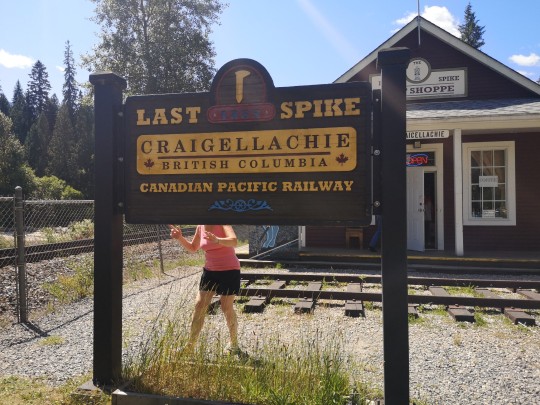

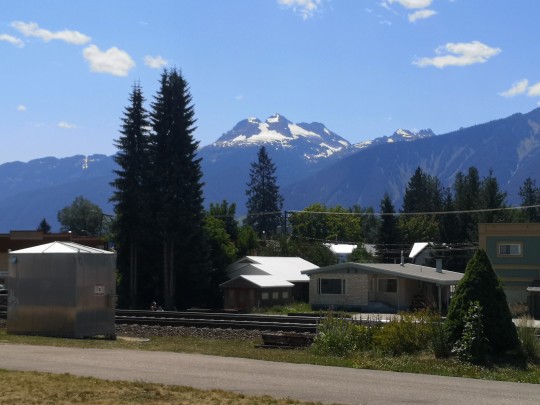


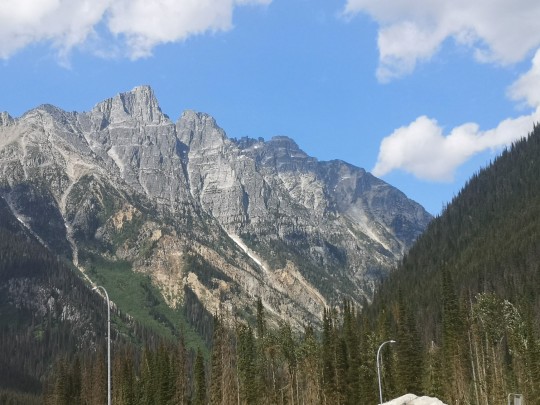
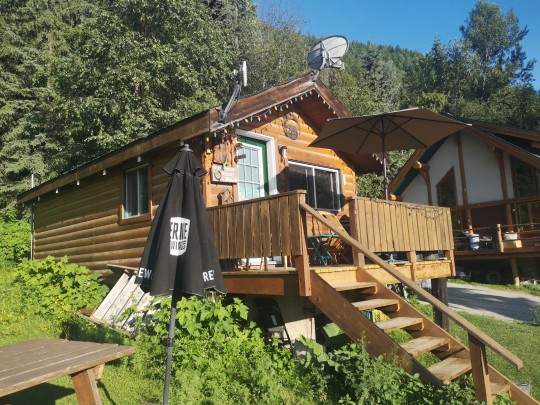
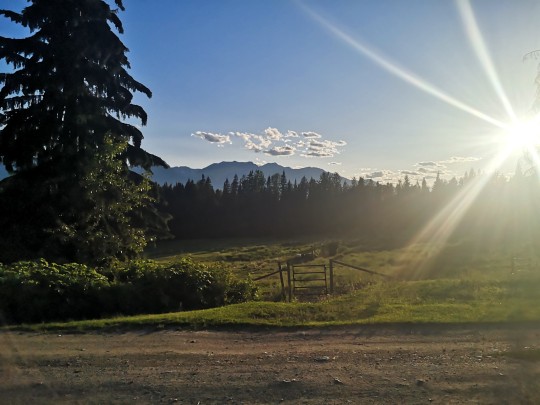
3 notes
·
View notes
Text
15 Toughest Treks in the World for Hiking Enthusiasts
Are you an adventurer at heart, always seeking the next thrilling journey? If the whisper of the wind through the pines, the allure of the untamed wilderness, and the exhilaration of ascending to new heights stir your soul, then this is the blog for you.
Welcome to our curated list of the 15 toughest treks in the world. These aren’t your average hikes; they’re thrilling adventures that push you to your limits, challenge your resilience, and reward you with breathtaking views and unforgettable experiences.
From the harsh arctic landscapes of Greenland to the towering peaks of the Nepalese Himalayas, each of these treks offers a unique journey that will test your endurance and ignite your adventurous spirit.
So, lace up your boots, pack your gear, and join us as we explore the thrilling world of extreme trekking. The mountains are calling – are you ready to answer?
Table Of Contents
1. Everest Base Camp Trek, Nepal 2. The Snowman Trek, Bhutan 3. The Pacific Crest Trail, USA 4. The Mount Kilimanjaro Trek, Tanzania 5. The Inca Trail to Machu Picchu, Peru 6. Mount Elbrus Trek, Russia 7. The Great Himalaya Trail, Nepal 8. Appalachian Trail, USA 9. Overland Track, Australia 10. GR20, Corsica 11. The Polar Route, Greenland 12. Routeburn Track, New Zealand 13. Larapinta Trail, Australia 14. The Long Range Traverse, Canada 15. Dientes Circuit, Chile Conclusion
1. Everest Base Camp Trek, Nepal
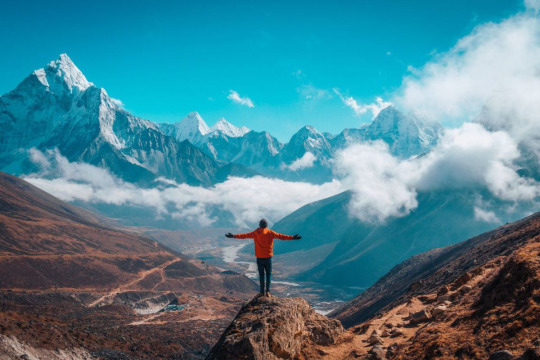
Embark on a journey to the foot of the highest peak in the world. The Everest Base Camp trek is not just a trek but a journey through the heart of the majestic Himalayas. This trek takes you through diverse landscapes, from lush valleys, glacial moraines, and terraced fields to pine forests and Sherpa villages. Along the way, you’ll encounter suspension bridges, ancient monasteries, and, of course, breathtaking views of some of the world’s tallest mountains. It’s a true test of endurance and acclimatization, but the reward is a firsthand view of Everest’s grandeur.
Altitude: 5,545 meters (18,192 ft)
Best Time to Go: March to May and September to November
Difficulty Level: Challenging
2. The Snowman Trek, Bhutan
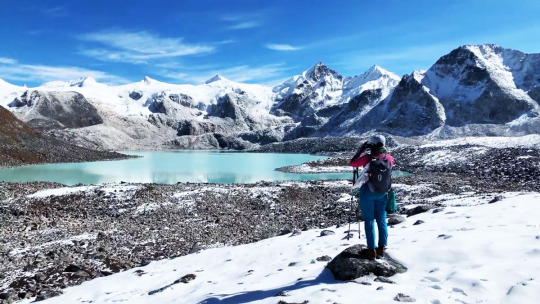
Touted as one of the most difficult treks in the world, the Snowman Trek traverses through eleven high-altitude passes, each over 4,500 meters. The journey unfolds across the remote Lunana region, offering a deep dive into Bhutan’s rich cultural heritage and lush, untouched landscapes. Expect to encounter serene mountain lakes, majestic peaks, isolated villages, and diverse wildlife. This trek is as mentally demanding as it is physically due to its length and the isolation of the terrain.
Altitude: 5,320 meters (17,454 ft)
Best Time to Go: September to October
Difficulty Level: Very Challenging
3. The Pacific Crest Trail, USA
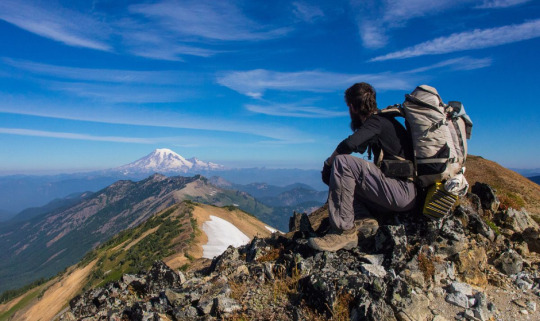
Spanning from the Mexican to the Canadian border, the Pacific Crest Trail offers an immersive journey through the diverse ecosystems of the American West. The trek takes hikers through scorching deserts, glaciated expanses of the Sierra Nevada, and the dense forests of Oregon and Washington. The length and varied terrain of the trek make it one of the toughest but also one of the most rewarding.
Altitude: 4,009 meters (13,153 ft)
Best Time to Go: May to November
Difficulty Level: Very Challenging
4. The Mount Kilimanjaro Trek, Tanzania
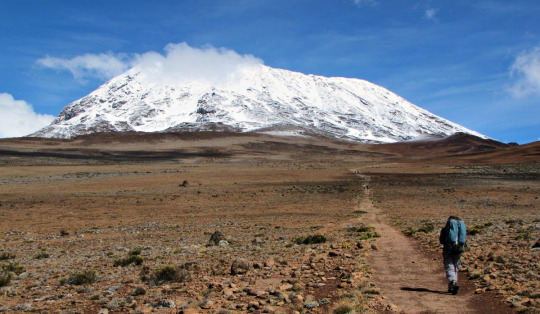
The highest peak in Africa, Mount Kilimanjaro, offers multiple routes for trekkers. Each route presents its unique set of challenges, including altitude sickness, steep inclines, and varying weather conditions. The journey unfolds through five different ecosystems, from lush rainforests and alpine deserts to the icy summit of Uhuru Peak. Despite the challenges, reaching the “Roof of Africa” is an unforgettable experience.
Altitude: 5,895 meters (19,341 ft)
Best Time to Go: January to March and June to October
Difficulty Level: Challenging
5. The Inca Trail to Machu Picchu, Peru
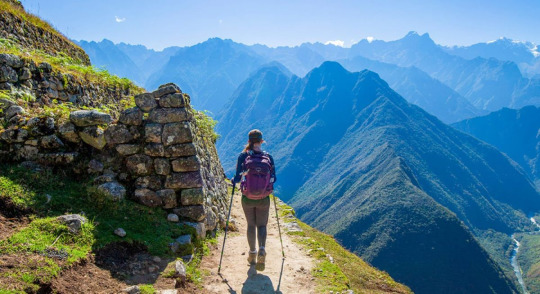
The Inca Trail is a rich journey through a variety of microclimates, across high mountain passes, and into lush subtropical vegetation. This trek provides glimpses into the past, with Incan paving stones, ruins, and tunnels scattered along the route. Despite the physical challenge of the high altitude and the steep ascents and descents, this trek offers an unrivaled reward: the sight of the ancient city of Machu Picchu at sunrise. The combination of natural beauty, fascinating history, and the physical challenge make this one of the most famous treks in the world.
Altitude: 4,200 meters (13,780 ft)
Best Time to Go: May to September
Difficulty Level: Moderate to Challenging
6. Mount Elbrus Trek, Russia
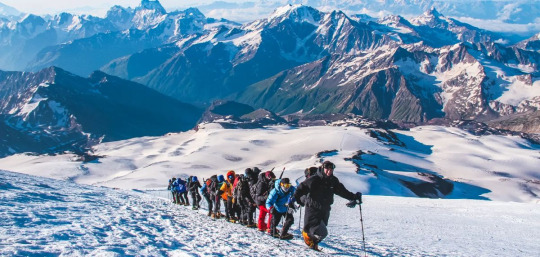
Mount Elbrus, nestled in the heart of the Caucasus Mountains, is the highest peak in Europe. The trek to its summit involves navigating through precarious glaciers and steep inclines. Despite the challenges, it offers panoramic views of the Caucasus and a unique sense of accomplishment. The trek’s difficulty is compounded by the unpredictable weather and the need for proper acclimatization, making it a must for experienced climbers.
Altitude: 5,642 meters (18,510 ft)
Best Time to Go: July to August
Difficulty Level: Very Challenging
7. The Great Himalaya Trail, Nepal
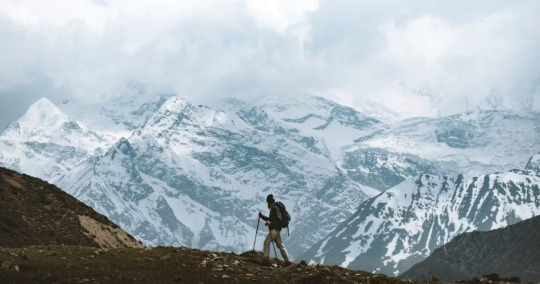
As one of the longest and highest walking trails in the world, the Great Himalaya Trail traverses the full length of the Nepalese Himalayas. This route takes trekkers through some of the wildest and most remote mountain environments on earth. The terrain is challenging and the route is remote, but the breathtaking views of high peaks, passes, and valleys make the trek an unforgettable journey. The trail is a testament to the beauty, diversity, and grandeur of the Himalayan range.
Altitude: 6,146 meters (20,160 ft)
Best Time to Go: March to May and October to November
Difficulty Level: Very Challenging
8. Appalachian Trail, USA
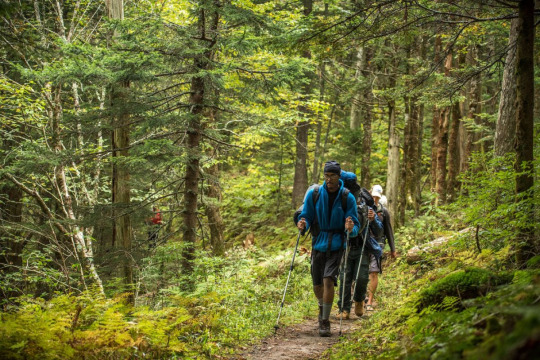
Spanning fourteen U.S. states, the Appalachian Trail is one of the longest continuously marked footpaths in the world. This journey takes hikers through wild landscapes, dense forests, and over numerous mountain peaks. Each section of the trail presents its unique set of challenges, from harsh weather conditions to physically demanding terrain. Still, the trail’s stunning beauty and the sense of accomplishment from completing sections, or the entire trail, draw hikers from around the world.
Altitude: 2,024 meters (6,643 ft)
Best Time to Go: March to September
Difficulty Level: Challenging
9. Overland Track, Australia
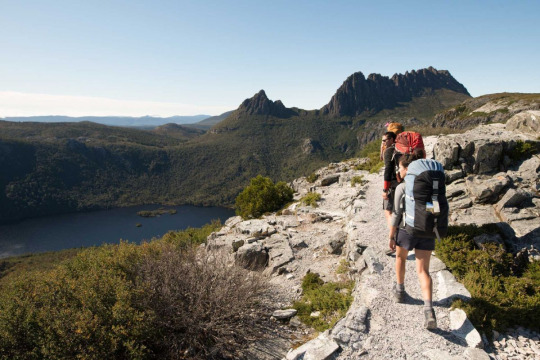
The Overland Track, Australia’s premier alpine walk, takes trekkers through the heart of the Cradle Mountain-Lake St Clair National Park. As part of the Tasmanian Wilderness World Heritage Area, this 65-km trail is a journey of discovery through diverse landscapes. From ancient rainforests and alpine meadows to rugged mountains and sparkling lakes, the track offers breathtaking views at every turn. The challenge of the Overland Track lies in its length and the unpredictable Tasmanian weather, but its stunning scenery and rich biodiversity make it worth the effort.
Altitude: 1,545 meters (5,069 ft)
Best Time to Go: October to May
Difficulty Level: Moderate to Challenging
10. GR20, Corsica
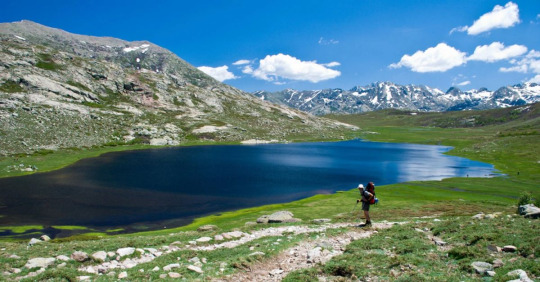
Considered the most challenging long-distance trail in Europe, the GR20 in Corsica stretches from the north to the south across the mountainous heart of the island. This stunning trek takes hikers through rugged peaks, beautiful glacial lakes, and dense forests. The trail’s beauty is matched by its difficulty, with steep ascents, rocky terrain, and often unpredictable weather conditions. The GR20 is a grueling trek but offers a rewarding experience that’s hard to match.
Altitude: 2,706 meters (8,878 ft)
Best Time to Go: June to September
Difficulty Level: Very Challenging
11. The Polar Route, Greenland
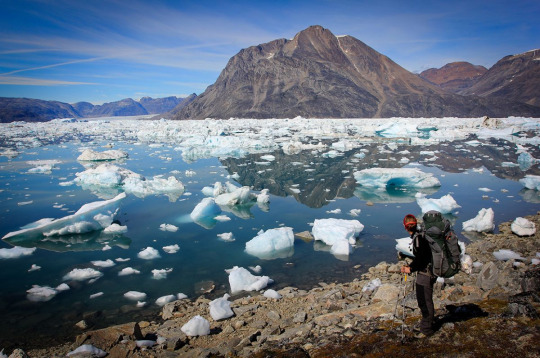
An arctic adventure like no other, the Polar Route in Greenland is a journey through ice fields, fjords, and remote arctic tundra. This challenging expedition tests the endurance of even the most experienced hikers, but the reward is a stunning, untouched wilderness, the chance to witness the Northern Lights, and the possibility of encountering arctic wildlife. The trek’s isolation and the harsh arctic climate add to the difficulty, making it a trek suited for the truly adventurous.
Altitude: Varies, up to 2,000 meters (6,562 ft)
Best Time to Go: April to June
Difficulty Level: Very Challenging
12. Routeburn Track, New Zealand
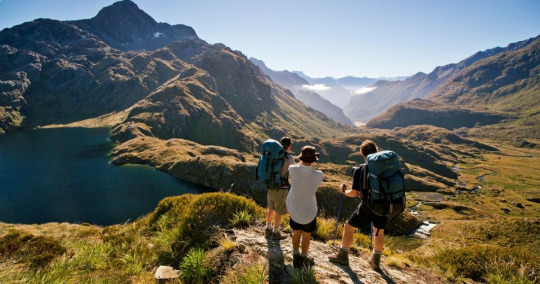
The Routeburn Track, located in New Zealand’s South Island, offers an incredible journey across the Southern Alps. The track winds through vast valleys, pristine alpine lakes, and verdant forests, showcasing the best of New Zealand’s diverse natural beauty. The trail is well-maintained, but the fluctuating weather conditions and the physical demands of the mountainous terrain make it a challenging trek. Regardless, the breathtaking views and the chance to explore the unique landscapes of New Zealand make the Routeburn Track a must-do for any hiking enthusiast.
Altitude: 1,255 meters (4,117 ft)
Best Time to Go: October to April
Difficulty Level: Moderate to Challenging
13. Larapinta Trail, Australia
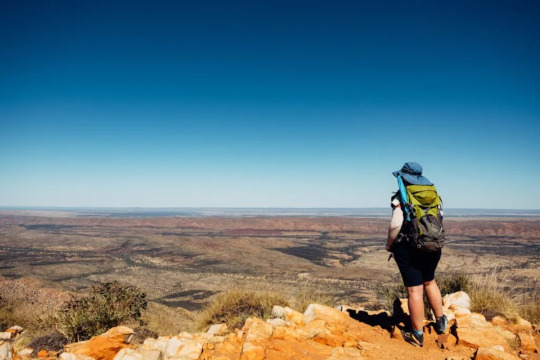
Situated in the heart of Central Australia, the Larapinta Trail extends over 223 kilometers along the spine of the West MacDonnell Ranges. This trail brings you up close to the ancient landscape of the Northern Territory, offering stunning views of jagged ridges, weathered peaks, and the rich, red soil of the Australian Outback. Hikers will encounter a wide variety of wildlife, rare plants, and a stark, captivating beauty that’s unique to this part of the world. The route’s length, combined with the harsh, arid climate, make it a challenging trek.
Altitude: 1,380 meters (4,528 ft)
Best Time to Go: April to September
Difficulty Level: Challenging
14. The Long Range Traverse, Canada
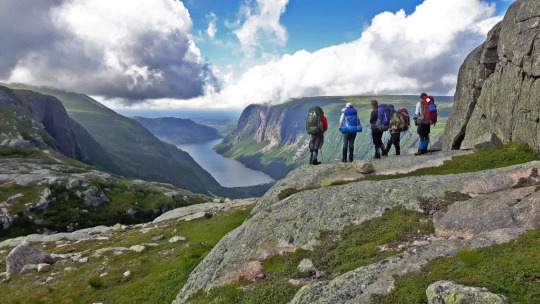
The Long Range Traverse is an unmarked and rugged backcountry route through some of the best wilderness in Canada’s Gros Morne National Park. This challenging trek requires navigation skills as you make your way through dense forest, across bogs, and up steep scree slopes. However, the breathtaking views of fjords, glacial valleys, and the raw, untamed beauty of the Newfoundland wilderness make it worth the effort.
Altitude: 806 meters (2,644 ft)
Best Time to Go: June to September
Difficulty Level: Challenging
15. Dientes Circuit, Chile
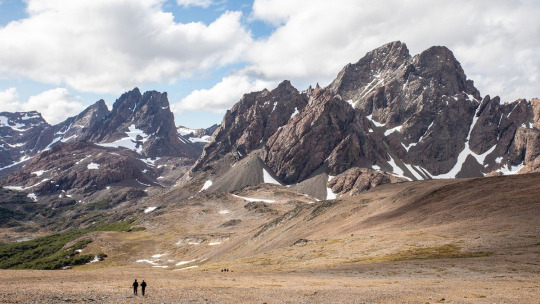
Found on the isolated Isla Navarino in the extreme south of Chile, the Dientes Circuit is a trek like no other. This remote, rugged trail will test your trekking skills as you navigate through untouched Magellanic forests, peat bogs, and steep mountain passes. The views from the trail are unparalleled, with the jagged peaks of the Dientes de Navarino range on one side and the Beagle Channel, Cape Horn, and the snowy mountains of Tierra del Fuego on the other. This trek is not for the faint-hearted, but the stunning, end-of-the-world scenery makes it a must-do for experienced hikers.
Altitude: 800 meters (2,624 ft)
Best Time to Go: December to March
Difficulty Level: Challenging
Conclusion
Tackling these treks isn’t merely about testing your physical stamina. It’s about pushing your boundaries, exploring the unexplored, and discovering your own resilience in the face of adversity. It’s about standing on top of a peak, looking out at the panoramic vistas, and realizing that the world is as vast as it is beautiful – and you’re a part of it.
So, whether you’re a seasoned hiker or an adventurous spirit looking for your next challenge, we hope this list has ignited a spark of wanderlust. Remember, every journey begins with a single step. And who knows? Perhaps your next step will lead you on one of the toughest treks in the world.
After all, as the famous mountaineer, Sir Edmund Hillary once said, “It’s not the mountain we conquer, but ourselves.” So here’s to the treks that await us, the summits yet to be conquered, and the adventures that lie ahead. Happy trekking!
2 notes
·
View notes
Text
7 Fascinating Facts About National Parks Around the World
Not only do national parks preserve stunning natural settings, but they also harbor some of the planet's most fascinating facts and unique features.
These parks are havens for a range of ecosystems, beautiful scenery, and even objects from the past.
Discover these seven fascinating facts about national parks worldwide that will surprise you with their majesty and importance.

7 Fascinating Facts About National Parks Around the World
1. Yellowstone - The World's First National Park
The first national park in the world was created in 1872 and is located in the United States' Yellowstone National Park. Developed to preserve its exceptional geothermal characteristics, including the well-known Old Faithful geyser that emits amazing regularity, this park is a pioneer in its field. With the construction of Yellowstone, a global effort to protect the environment for future generations was launched. Together with a wide variety of species, the park is home to grizzly bears, wolves, herds of bison, and elk in addition to geysers. Another Yellowstone fascinating facts, which spans more than 2.2 million acres and provides a singular combination of natural beauties, is a site that nature followers simply must see.
2. Sagarmatha - Home to the World's Tallest Mountain
Situated within the Himalayas, Nepal's Sagarmatha National Park is the majestic home of the planet's highest peak, Mount Everest. Mountaineers and explorers from all over the world have Mount Everest on their bucket lists because it elevated 8,848 meters (29,029 feet) above sea level. In addition to providing breathtaking views of Mount Everest, Sagarmatha National Park, a UNESCO World Heritage Site, safeguards a wide range of wildlife, including the elusive snow leopard and the red panda. The Sherpa people, who have coexisted peacefully with their hostile surroundings for millennia, are also inhabitants of the park's steep hills and deep valleys.
3. Kruger - A Wildlife Haven in South Africa
Spanning nearly 19,485 square kilometers (7,523 square miles), Kruger National Park is one of Africa's largest and most renowned game reserves. Located in northeastern South Africa, Kruger is a wildlife enthusiast's dream, offering the chance to see the Big Five like lions, elephants, rhinos, leopards, and buffalo in their natural habitat. The park's diverse fascinating facts of ecosystems, from savannas to riverine forests, support a wide range of species, including over 500 bird species. Kruger National Park is also a leader in conservation, employing advanced anti-poaching measures and contributing to global wildlife research. Visitors can explore the park through self-drive safaris or guided tours, making it accessible for all kinds of travelers.
4. Banff - Canada's First National Park
As the oldest national park in Canada, Banff National Park was created in 1885 and is a representation of the natural legacy of the nation. Situated in the center of the Rocky Mountains in Alberta, Banff is well-known for its stunning natural beauty, which includes towering peaks, deep woods, and glacial lakes like the well-known Lake Louise. There are many different outdoor fascinating facts available in the park, including hiking, skiing, observing wildlife, and hot springs. Nestled inside the park, Banff's historic town offers a quaint starting point for exploring this amazing wilderness. Banff is still one of the most well-liked tourist attractions in Canada because it combines natural beauty and extensive history.
Read: Dark Facts About the Fashion Industry You Didn’t Know
5. Great Barrier Reef - The World’s Largest Coral Reef System
The world's largest and most complex coral reef system is preserved in Australia's Great Barrier Reef Marine Park, a natural marvel that can be seen from space. The Queensland coast's massive reef system, spanning over 2,300 kilometers (1,430 miles), is home to an incredible wide variety of marine life, including over 1,500 fish species, 411 types of hard coral, and 134 types of sharks and rays. In addition to being a UNESCO World Heritage Site, the Great Barrier Reef provides critical support to marine conservation efforts. Pollution, bleached coral, and climate change pose serious risks to the reef. To ensure that future generations can continue to be in wonder about this happiness ecosystem's underwater treasures, efforts are being made to safeguard and restore it.
(more)
1 note
·
View note
Text
posted on January 17, 2024
location: Kangaroo Island, Australia
hair is in a high messy bun
*Mikey’s arm is in a sling
1. pic of Malori and Mikey standing in the Remarkable Rocks with huge rocks behind them and the ocean in the background, Mikey has one arm in a sling and the other around Malori’s back, Malori has one arm around Mikey’s back and the other hand on his chest, they both smile
2. pic of Malori and Mikey standing on a wooden bridge/platform in front of Admirals Arch (a cave looking archway by the beach with long sharp rocks hanging from it (like icicles)) with the ocean and more rocks/mountains in the background, Mikey has one arm in a sling and the other around Malori’s back, Malori has one arm around Mikey’s back and the other hand on her leg, Mikey smiles, Malori smiles softly
3. vid of Malori feeding a kangaroo in a petting zoo with sandy looking dirt on the ground, she squats down and has one hand out with food in it and pets the kangaroo on the back with her other hand, the kangaroo eats the food and then Malori looks up at the camera, she smiles the whole time
4. vid of Seal Bay Beach, a beach with seals all over it
5. pic of Malori sitting on some rocks at Seal Bay Beach with a sandy/grassy hill behind her, she sits on the tallest rock, she has one hand out behind/beside her and the other hand on her leg with her legs crossed, there are seals on the shorter rocks next to her, she smiles
6. pic of Malori and Mikey standing on the beach with the ocean in the background, Mikey has one arm in a sling and the other arm around Malori’s back, Malori has one arm around Mikey’s back and the other hand on her leg with one leg slightly in front of the other, they both smile

Kangaroo Island was a dream come true! So so blessed to have gotten to experience it 🙌🏼🖤
0 notes
Text
places I wanna visit
Nevis Canyon Swing: New Zealand
Stairway to Heaven, Austria
Bluewater Swing, England
Ginkakuji Temple, Japan
Shoe Trees, anywhere in the U.S.
Tallest mountains in each continent:
Kilimanjaro in Africa
Mount Elbrus in Europe
Mount Aconcagua in South America
Mount Everest in Asia
Vison Massif in Antarctica
Mount Kosciusko in Australia
Jaya Peak in Oceania
Denali in North America
Angel Falls, Venezuela
Niagara Falls, New York
Glacier National Park, Montana
Big Bend, Texas
Crystal City Underground
Studio City Macau Mater Park
Blue Grotto, Capri, Italy
0 notes
Text
SOUTH KOREAAAAA
After Australia I decided to go to my favorite country, South Korea! South Korea is located right under its evil older brother North Korea, and between the Yellow Sea and the Sea of Japan. The currency for Korea is won, and one dollar in the United States is equivalent to 1356.95 won. They also have different etiquette than anywhere else in the world. It is considered rude to shake someone's hand without using both of your hands, and only if you know you are below their social rank or age. It is also rude to assume that you can call someone by their first name, you should either say their last name or ask them what they would like to be called. It is also considered impolite to decline going out for either food or drinks, and something that goes with that is that you should not pour your own liquor when you are out. The national language is of course Korean, although there is polite lingo as well as impolite. Luckily for me, I already know some phrases in Korean, as well as I can read Hangul which is their written language. Although I might know how to say words, I most likely would not know what it means. The first city I am going to be going to is Seoul and I will be going to three attractions. The first place I am going to see is Seoul Tower, Changdeokgung Palace, and the Dongdaemum Market.
The first day I got to South Korea I decided to go to the Seoul, and I got there pretty late and the time differences from all the places I have been are totally fucking me up. So I got to my airbnb and I absolutely love it there. It is basically just one single room in a L shape and it's so cuuuute. I learned quickly that it has a very open concept, like there are windows on almost every single wall and if there are no windows then it is because behind the wall is another airbnb. I love having open concepts but maybe not this open… I like having space to myself and having privacy. There is a private patio where all of the windows face but it’s still a little bit foreign to me. I do love all the wood accents over the entire place because it makes me feel comfortable.
The first morning in Seoul I got some breakfast from McDonalds and then I made my way over to N Seoul Tower. The tower is located on Namsan Mountain and is the tallest building in Seoul at 784’ tall. The original name was Namsan Tower but in 2005 they changed it to N Seoul Tower, which the N stands for “Namsan”, “New”, and “Nature”. As I walked up the mountain to the tower, there was only some wildlife but not a whole lot. Which didn’t really surprise me because Seoul is so jam packed with people and city life. Although I did see a few of their national birds, Magpies! They symbolize luck and good fortune, which I definitely needed walking up all that way to the tower. The walk was around 45 minutes but it felt like hours, because I absolutely hate hikingggg. The view was really pretty though!
After my tiring hike up seoul tower, I got to explore the lively Dongdaemun Market in Seoul, and it was an absolute blast! The market was buzzing with energy, a perfect mix of old-school charm and modern flair. Everywhere I turned, there were amazing sights and smells – from delicious street food stands to colorful stalls packed with trendy clothes and cool accessories. I loved getting lost in the maze of shops, stumbling upon unique finds and haggling for the best deals. The vibe was super energetic, and I felt like I was part of something really special. It was such a fun and unforgettable experience, giving me a real taste of Seoul's vibrant culture and style.
Visiting Changdeokgung Palace in South Korea was like stepping into a fairytale! This UNESCO World Heritage site is absolutely stunning, with its beautifully preserved architecture and serene gardens. As I wandered through the palace grounds, I was amazed by the intricate details of the buildings and the vibrant colors that seemed to tell stories of a bygone era. The Secret Garden, or Huwon, was my favorite part – it felt like a hidden oasis with its peaceful ponds, pavilions, and lush greenery.
The whole experience was both relaxing and awe-inspiring. I loved imagining what life might have been like for the royalty who once roamed these halls. Walking through the palace, I felt a deep connection to Korea’s rich history and cultural heritage. It was such a refreshing change of pace from the bustling city life, and I left feeling inspired and completely enchanted by this magical place. Even on my walk back to my airbnb I was still thinking about the amazing architecture.








0 notes
Text
Events 5.23 (after 1950)
1951 – Tibetans sign the Seventeen Point Agreement with China. 1960 – A tsunami caused by an earthquake in Chile the previous day kills 61 people in Hilo, Hawaii. 1971 – Seventy-eight people are killed when Aviogenex Flight 130 crashes on approach to Rijeka Airport in present-day Rijeka, Croatia (then the Socialist Federal Republic of Yugoslavia). 1971 – The Intercontinental Hotel in Bucharest opens, becoming the second-tallest building in the city. 1992 – Italy's most prominent anti-mafia judge Giovanni Falcone, his wife and three body guards are killed by the Corleonesi clan with a half-ton bomb near Capaci, Sicily. His friend and colleague Paolo Borsellino will be assassinated less than two months later, making 1992 a turning point in the history of Italian Mafia prosecutions. 1995 – The first version of the Java programming language is released. 1998 – The Good Friday Agreement is accepted in a referendum in Northern Ireland with roughly 75% voting yes. 2002 – The "55 parties" clause of the Kyoto Protocol is reached after its ratification by Iceland. 2006 – Alaskan stratovolcano Mount Cleveland erupts. 2008 – The International Court of Justice (ICJ) awards Middle Rocks to Malaysia and Pedra Branca (Pulau Batu Puteh) to Singapore, ending a 29-year territorial dispute between the two countries. 2013 – A freeway bridge carrying Interstate 5 over the Skagit River collapses in Mount Vernon, Washington. 2014 – Seven people, including the perpetrator, are killed and another 14 injured in a killing spree near the campus of University of California, Santa Barbara. 2015 – At least 30 people are killed as a result of floods and tornadoes in Texas, Oklahoma, and northern Mexico. 2016 – Two suicide bombings, conducted by the Islamic State of Iraq and Syria, kill at least 45 potential army recruits in Aden, Yemen. 2016 – Eight bombings are carried out by the Islamic State of Iraq and Syria in Jableh and Tartus, coastline cities in Syria. One hundred eighty-four people are killed and at least 200 people injured. 2017 – Philippine President Rodrigo Duterte declares martial law in Mindanao, following the Maute's attack in Marawi. 2021 – A cable car falls from a mountain near Lake Maggiore in northern Italy, killing 14 people. 2021 – Ryanair Flight 4978 is forced to land by Belarusian authorities to detain dissident journalist Roman Protasevich. 2022 – Anthony Albanese of the Australian Labor Party is sworn in as the 31st Prime Minister of Australia after winning the 2022 Australian federal election, ending 9 years of conservative rule.
0 notes
Text
Top 10 Motorable Passes in Australia and Your Foreign Driving Guide

Australia, the land down under, beckons with its vast landscapes, diverse ecosystems, and iconic landmarks. But for the truly adventurous soul, there’s a unique way to experience its beauty: a road trip through its stunning motorable mountain passes. These winding ribbons of asphalt climb through breathtaking scenery, offering unparalleled views and unforgettable driving experiences.
This blog unveils the top 10 motorable passes in Australia, taking you on a virtual journey across the country. We’ll also provide essential information for foreign tourists planning a driving adventure in Australia, including international driving permits and camping recommendations.
Top 10 Motorable Passes in Australia:
Black Spur Drive (Victoria): Nestled in the Yarra Valley, the Black Spur Drive winds through lush rainforests and towering eucalypts. Take in cascading waterfalls, charming towns like Warburton, and stop for a spot of wine tasting at local wineries.
Great Alpine Road (Victoria): This iconic route stretches from Mansfield to Metung, traversing the Victorian Alps. Witness the majestic peaks of Mount Hotham and Falls Creek, explore charming mountain villages, and marvel at the ever-changing scenery.
McKenzie Pass (Queensland): Located in the Scenic Rim region, this pass offers panoramic views of the Great Dividing Range. Visit Lamington National Park for hiking trails and waterfalls, or explore the charming town of Boonah.
Springsure Savannah Way (Queensland): Embark on an outback adventure on this unsealed section of the Savannah Way. Drive through sandstone gorges, spot diverse wildlife, and camp under a blanket of stars in Carnarvon National Park.
Thunderbolt Pass (New South Wales): This scenic route in New England National Park is known for its dramatic drops and sweeping vistas. Explore historic towns like Hillgrove and Ararat, or take a detour to Wollomombi Falls, the tallest waterfall in Australia.
Kosciuszko Road (New South Wales): Climb to the highest point in mainland Australia, Mount Kosciuszko, via this scenic route. Enjoy snowfields in winter (check for road closures) or explore the stunning Kosciuszko National Park year-round.
Picton to Mittagong (New South Wales): This scenic stretch along the Hume Highway offers a glimpse of the Southern Highlands. Stop at historical villages like Berrima, visit wineries in the Mittagong region, or explore the beauty of Nattai National Park.
The Bluff (South Australia): Experience rugged Flinders Ranges on this scenic drive. Take in breathtaking views of Wilpena Pound, spot native wildlife like kangaroos and emus, and explore the rich Aboriginal history of the region.
Gibb River Road (Western Australia): This legendary off-road track in the Kimberley region is not for the faint-hearted. However, the reward is a journey through remote outback landscapes, with opportunities for swimming in waterholes, exploring ancient rock art, and experiencing true wilderness.
Great Ocean Road (Victoria): No list of Australian drives is complete without the Great Ocean Road. Cruise along the coastline, witness the iconic rock formations of the Twelve Apostles and Loch Ard Gorge, and explore the vibrant surf towns along the way.
Driving in Australia as a Foreign Tourist:
To drive legally in Australia as a foreign tourist, you’ll need to have:
Your valid driver’s license from your home country.
An International Driving Permit Australia (IDP).
An IDP translates your driver’s license into several languages and is valid for up to 12 months in Australia. You can apply for an IDP through your local motoring authority in your home country.
How to Apply for an International Driving Permit (IDP) in Australia (Online – Not Applicable):
There is no online application process for an IDP in Australia. You’ll need to apply through your home country’s motoring authority.
Best Places for Camping in Australia:
Australia offers a plethora of camping options, from national parks with designated campsites to caravan parks with amenities. Here are some recommendations:
National Parks: Most national parks have designated camping areas with basic amenities like toilets and fire pits. Popular options include Kakadu National Park (NT), Fraser Island (QLD), and Freycinet National Park (TAS).
State Forests: State forests often offer free or low-cost camping options. Be sure to check regulations and fire restrictions before setting up camp.
Caravan Parks: These offer a range of amenities like powered sites, camp kitchens, and swimming pools. They are a great option for those seeking a more comfortable camping experience.
Tips for a Safe and Enjoyable Road Trip:
Plan your route: Research road
conditions, closures, and fuel stops beforehand.
Check the weather: Be prepared for changing weather conditions, especially in remote areas.
Pack for all seasons: Australia has diverse climates, so pack layers of clothing suitable for varying temperatures.
Respect the environment: Leave no trace behind and adhere to camping regulations in national parks and state forests.
Be aware of wildlife: Watch out for animals on the road, especially at dawn and dusk.
Carry a spare tire and basic tools: Be prepared for unexpected breakdowns.
Travel with a mobile phone: Ensure good coverage in case of emergencies. (Satellite phones might be necessary for remote areas)
Beyond the Drive: Exploring Australia’s National Parks:
Australia boasts some of the world’s most spectacular national parks, offering a plethora of activities beyond the scenic drives. Here are some suggestions:
Hiking: Tackle challenging trails in the rugged terrain of Tasmania’s Cradle Mountain-Lake St. Clair National Park or explore the ancient rainforests of Daintree National Park (QLD).
Wildlife watching: Witness the unique fauna of Australia, from koalas and kangaroos to crocodiles and whales. Take a boat tour in Kakadu National Park (NT) or explore the coral reefs of the Great Barrier Reef Marine Park (QLD).
Aboriginal Culture: Learn about Australia’s rich Indigenous history through guided tours, cultural experiences, and rock art sites. Visit Uluru-Kata Tjuta National Park (NT) or Kakadu National Park for a deeper understanding.
Conclusion:
Australia beckons with a road trip adventure unlike any other. Explore the diverse landscapes through its stunning motorable passes, embrace the freedom of the open road, and delve into the country’s unique culture and natural wonders. By following these tips and recommendations, you can plan an unforgettable journey Down Under.
0 notes
Text
The Great ACT-NSW-NZ Trip, 2023-2024 - The Snowy Mountains
Not that there was much snowy when we went across - the Australian Alps barely qualify, and you can ride a bicycle to the top of our tallest mountain. So, not much snow, and, unfortunately not much forest left in a lot of it either. The Black Summer Bushfires that burnt 21% of Australia's woodland did a number on much of the National Park as well, and it'll be centuries before the ecosystems up there recover, if they ever do - rising temperatures and feral horses are doing the alpine environment no good at all.
We did stop once or twice, where the road wasn't meandering around on alarmingly steep slopes, but I haven't got any of my sightings down to species so I'll be skipping them for now (and I found much better Mountain Daisies in New Zealand).



#snowy mountains#australian wildflower#tachinidae#bristle fly#celmisia#pimelea#asteraceae#Thymelaeaceae
1 note
·
View note
Text
50 Gk questions with answers in english
50 General Knowledge Questions with Answers in English:
Geography and History:
Which continent is the smallest by landmass? (Answer: Australia)
In which year did the Berlin Wall fall? (Answer: 1989)
What is the highest mountain in the world? (Answer: Mount Everest)
Which city hosted the first ever Olympic Games in the modern era? (Answer: Athens)
What is the largest desert in the world? (Answer: Sahara Desert)
Who painted the Mona Lisa? (Answer: Leonardo da Vinci)
Which river flows through the Grand Canyon? (Answer: Colorado River)
Which country is the most populous in the world? (Answer: China)
When was the United Nations founded? (Answer: 1945)
What is the capital of Canada? (Answer: Ottawa)
Science and Technology:
What element makes up the majority of the Earth's atmosphere? (Answer: Nitrogen)
Who invented the light bulb? (Answer: Thomas Edison)
What is the largest planet in our solar system? (Answer: Jupiter)
What is the process by which plants convert sunlight into energy? (Answer: Photosynthesis)
What is the scientific name for the common cold? (Answer: Rhinitis)
What is the largest living organism on Earth? (Answer: Honey fungus)
What is the fastest man-made object ever launched? (Answer: Voyager 1)
What is the process by which computers store data? (Answer: Digital storage)
What is the chemical symbol for water? (Answer: H2O)
What is the largest mammal on Earth? (Answer: Blue whale)
Current Affairs and Culture:
Who is the current Secretary-General of the United Nations? (Answer: António Guterres)
What is the most popular social media platform in the world? (Answer: Facebook)
What is the currency of Japan? (Answer: Japanese yen)
Which country won the most recent FIFA World Cup? (Answer: Argentina, 2022)
What is the capital of Australia? (Answer: Canberra)
Who is the current president of the United States? (Answer: Joe Biden)
What is the largest country in the world by landmass? (Answer: Russia)
What is the most spoken language in the world? (Answer: Mandarin Chinese)
What is the name of the current COVID-19 pandemic variant of concern? (Answer: XBB.1.5)
What is the world's tallest building? (Answer: Burj Khalifa)
Literature and Art:
Who wrote the novel "Hamlet"? (Answer: William Shakespeare)
What is the name of the famous painting by Vincent van Gogh featuring a starry night? (Answer: The Starry Night)
Which composer wrote the opera "Carmen"? (Answer: Georges Bizet)
What is the national flower of India? (Answer: Lotus)
Which language is the oldest known language in the world? (Answer: Sumerian)
Who is the author of the book "To Kill a Mockingbird"? (Answer: Harper Lee)
What is the name of the famous sculpture in Rio de Janeiro, Brazil? (Answer: Christ the Redeemer)
Who painted the Mona Lisa? (Answer: Leonardo da Vinci)
What is the national sport of Canada? (Answer: Ice hockey)
Which artist painted the "Guernica" anti-war masterpiece? (Answer: Pablo Picasso)
Bonus Questions:
What is the name of the world's longest river? (Answer: Nile River)
What is the chemical symbol for gold? (Answer: Au)
What is the capital of France? (Answer: Paris)
What is the smallest country in the world by landmass? (Answer: Vatican City)
What is the name of the world's largest ocean? (Answer: Pacific Ocean)
What is the name of the world's most popular video game? (Answer: Minecraft)
What is the name of the current Pope of the Catholic Church? (Answer: Pope Francis)
What is the capital of Germany? (Answer: Berlin)
Latest General Knowledge Questions with Answers
Interesting general knowledge Questions with Answers
Random General knowledge Questions with Answers
Common general knowledge questions and answers for students,
1 note
·
View note
Text
Discover 100 Epic Man-Made Wonders Worldwide: 2024 Edition!
youtube
here are 100 Epic Man-Made Wonders of the World for the 2024 Edition, with a focus on showcasing the diversity and ingenuity of human creations across the globe:
Grand Canyon, USA:
A mile-deep chasm carved by the Colorado River over millions of years, the Grand Canyon is a staggering display of nature's power and beauty.
Great Barrier Reef, Australia:
The world's largest coral reef system, teeming with marine life and vibrant colors, is a natural wonder under threat from climate change.
Victoria Falls, Zambia/Zimbabwe: The largest waterfall in the world by volume, Victoria Falls is a thundering spectacle of cascading water.
Northern Lights, Scandinavia/Arctic:
A mesmerizing natural light display caused by the interaction of charged particles from the sun with Earth's atmosphere.
Amazon Rainforest, South America:
The world's largest rainforest, home to an incredible diversity of plant and animal life, is vital to the health of the planet.
Great Wall of China: A sprawling serpent of stone and earth winding through China's landscape, the Great Wall is a testament to human ambition and defense.
Chichen Itza, Mexico: A Mayan city with towering pyramids, temples, and ball courts, offering a glimpse into a lost civilization.
Machu Picchu, Peru: An ancient Inca city perched high in the Andes Mountains, Machu Picchu is a mysterious and captivating archaeological site.
Stonehenge, England: A prehistoric monument of unknown purpose, Stonehenge continues to inspire awe and speculation.
Pyramids of Giza, Egypt: The iconic pyramids, tombs of the pharaohs, are enduring symbols of ancient Egyptian civilization and engineering prowess.
Burj Khalifa, Dubai: The world's tallest building, piercing the Dubai skyline with its needle-like form, is a marvel of modern engineering.
Channel Tunnel, England/France: An underwater rail tunnel linking England and France, a testament to human ingenuity in conquering geographical barriers.
International Space Station: A collaborative effort of multiple nations, the ISS orbits Earth, serving as a platform for scientific research and a symbol of international cooperation.
Golden Gate Bridge, USA: A suspension bridge spanning the Golden Gate strait in San Francisco, a visually striking landmark and engineering marvel.
Panama Canal, Panama: A shortcut between the Atlantic and Pacific Oceans, the Panama Canal transformed maritime trade and continues to be an engineering marvel.
Taj Mahal, India: An ivory-white marble mausoleum built by Mughal emperor Shah Jahan in memory of his third wife, Mumtaz Mahal, the Taj Mahal is a monument to love and architectural beauty.
Angkor Wat, Cambodia: A vast temple complex built by the Khmer Empire, Angkor Wat is a stunning example of Khmer architecture and religious devotion.
Hagia Sophia, Turkey: A former Byzantine church, later converted into a mosque and now a museum, Hagia Sophia is a architectural masterpiece blending Christian and Islamic influences.
Sagrada Familia, Spain: An unfinished basilica designed by Antoni Gaudí, the Sagrada Familia is a whimsical and otherworldly architectural masterpiece.
Learn more
1 note
·
View note
Text
Stunning World Facts: Nature's Marvels and Human Achievements

Our world is a tapestry woven with the threads of awe-inspiring natural wonders and remarkable human achievements. From the grandeur of nature's masterpieces to the feats of human ingenuity, there's an endless array of stunning world facts that capture the imagination. In this article, we will take you on a journey to explore some of these captivating marvels and achievements that remind us of the beauty and potential of our world.
1. The Great Wall of China: An Ancient Wonder
The Great Wall of China is a testament to human determination and engineering prowess. Stretching over 13,000 miles (21,196 kilometers), it's one of the most iconic man-made structures in history. Built to protect against invasions, this colossal wall is a remarkable feat of human achievement that weaves through China's stunning landscapes.
2. The Amazon Rainforest: A Biodiversity Hotspot
The Amazon Rainforest is often referred to as the "lungs of the Earth" for its role in producing oxygen. It's also the most biodiverse place on the planet, home to roughly 10% of known species. This lush and vibrant ecosystem is a reminder of the incredible diversity of life our planet hosts.
3. The Great Barrier Reef: A Natural Wonder
Off the coast of Australia, the Great Barrier Reef is the world's largest coral reef system, visible even from space. It's a breathtaking testament to the beauty of marine life and the intricacies of coral ecosystems.
4. Machu Picchu: The Lost City of the Incas
Perched high in the Andes Mountains, Machu Picchu is an archaeological marvel and a UNESCO World Heritage site. This ancient Incan city's breathtaking terraces, stone structures, and stunning views remind us of the achievements of past civilizations.
5. The Northern Lights: A Dazzling Light Show
The Northern Lights, or Aurora Borealis, light up the polar skies with shimmering displays of green, pink, and purple. This natural light show is the result of solar particles colliding with Earth's atmosphere and is a stunning reminder of the mysteries of our universe.
6. The Pyramids of Giza: Ancient Egyptian Ingenuity
The Pyramids of Giza have fascinated people for centuries with their perfect geometry and monumental size. These ancient tombs are a testament to the engineering skills and cultural achievements of the Egyptians.
7. The Grand Canyon: A Geological Wonder
The Grand Canyon in Arizona, USA, reveals millions of years of Earth's history through its layers of rock. Its vast size and breathtaking vistas are a testament to the power of erosion and the beauty of geological formations.
8. Mount Everest: Earth's Highest Point
Mount Everest stands as the tallest mountain on Earth, challenging adventurers to conquer its summit. Scaling this mighty peak is a remarkable human achievement and a testament to human perseverance.
9. The Victoria Falls: The Largest Waterfall
Victoria Falls, known as the "smoke that thunders," is the largest waterfall on Earth. Its immense width and thunderous roar are a reminder of the power of water and the beauty of natural landscapes.
10. The International Space Station: A Space Marvel
The International Space Station (ISS) is a triumph of human collaboration and space exploration. Orbiting above our planet, it's a testament to our ability to live and work in space, advancing our understanding of the cosmos.
These stunning world facts, ranging from the Great Wall of China to the wonders of the Amazon Rainforest, highlight the grandeur of nature and the heights of human achievement. They serve as reminders of the incredible diversity and potential of our world, inspiring us to protect, explore, and appreciate the beauty that surrounds us.
0 notes